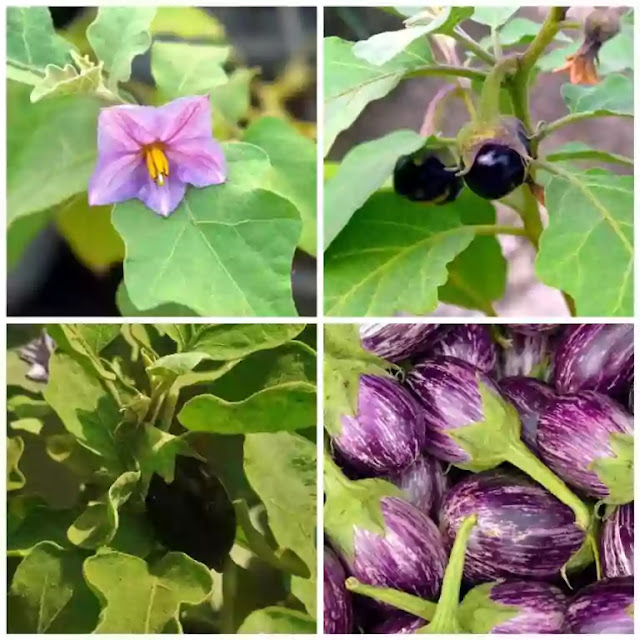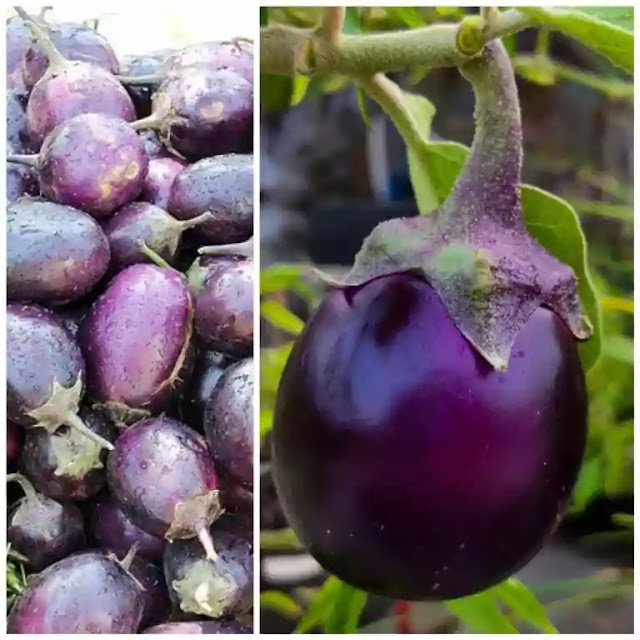Brinjal is a very general vegeatable but most of the people don't know the benefits of it. Brinjal is full of antioxidants and minearls. It helps to balance the blood sugar level and can help to reduce heart diseases. People can grow fresh brinjals in their gardens, terrace or pots at home.
How to grow brinjal plants at home?
Brinjal growing is a bit difficult in comparison to cucumber and broccoli growing in pots. Brinjal can have multiple diseases during mid growth. So it is important to deal with them with organic pesticides(avoid chemical ones).
Let's understand the entire process of growing brinjal plants in pots/containers at home-
Requirements to grow brinjals at home in containers
Type of containers/pots
Each time we see that if people grow plants/vegetables at home they use either plastic containers or thin plastic bags. One other alternative for plastic containers is hard loamy soil pots.
It depends on your choice that what kind of pots/containers you are going to use to grow brinjal. But you have to keep in mind that opening some drain holes in the pots/containers.
To grow sprouts or small plants of brinjal, you need a least 20 inches diameter container. Its height can be 8 to 10 inches deep. Make drainage holes.
Small containers to transplant the brinjal plants, you need 6 to 8 inches deep and 8 to 10 inches in diameter. The number of pots depends on your need.
Fertile soil mixture for brinjal plants
Brinjal can grow in plenty of fertile soil more easily than direct non-fertile garden soil. To make a quality fertile soil mixture, you need to mix the soil with a 50%-50% ratio of garden soil and vermicompost/organic compost. Let it rest for 3 to 5 days and use it after.
Keep extra soil separate after filling all the containers for later use.
Temperature and humidity
Process of growing brinjal in containers/pots at home
After all the requirements, you need to start the actual process to grow brinjal as follows-
Sowing of brinjal seeds
Fill the big container with soil mixture till a few inches below its height.
Soil should not be very tight before scattering the seeds.
Now, scatter your brinjal seeds on it and cover them with a thin layer of the same soil mixture. The seeds must not be over each other. They should be scattered in some space.
Sprouting and transplantation of brinjal plants
After 5 to 7 days, brinjal sprouts appear and become 1 to 2 inches in height. Provide them water showering once in the first 10 days. After 16 to 20 days, brinjal sprouts become small plants about 4 to 5 inches. Now pick them with the help of a small cultivator tool. Dig holes in the rest of the filled containers with soil. Sow the picked plants in separate containers and cover them with the soil mixture. Spray some water and let them in direct sunlight to provide them better and faster growth.
Bamboo support for brinjal plants
Brinjal plant start to hang when brinjal appears. Sometime overload on the plant stem cause the young brinjal to touch the soil. This can waste the brinjal.
To avoid this problem, use bamboo sticks as a vertical support stand. Just before brinjal flowers appearence, tie the bamboo sticks with the help of thread.
Bamboo support is required to brinjal plants if you are growing them in containers.
Composting of brinjal plants
Once you see light purple flowers appear, provide the first vermicompost to the plants and spray water(if required). You have to provide each plant compost till you get the mature brinjals. But last composting should be just 15 days before harvesting.
Weeding of spontaneous plants
To clean spontaneous plants, you need small cultivator tools or you can just grab and pick them directly from the container.
Spontaneous plants can negatively impact on the brinjal plants growth, so regular weeding is required. Do it when you see such small spontaneous plants.
Harvesting of fresh brinjals
Morning time is best to harvest any bigger plant yield. It is because, in the morning, they don't get dry or loose and remain hard and more fresh for a longer period.
After 110 days, brinjal become ready to harvest. But particular period depends on the variety you are using. It is slightly different of cook and overcook a vegetable in the kitchen.
How to prevent brinjal plant diseases
Yellowness on the leaves, direct infection in plant and start of rot, and stop the growth of plant are the common diseases that brinjal plant can get.
To avoid such diseases, you need proper organic pesticides. You can use natural neem oil.
You can take the ratio of 25ml neem oil mix with 1 liter of water. Spray it direct on the plants and brinjal when you find any of such diseases. You don't have to spray whole bottle on it. Just spray few drops on each plant those got infected.
Challenges to grow brinjal
Getting infected of any casual disease is normal for brinjal plants. But it is important what way you choose to prevent these diseases. Its a challenge recover plants from infections.
Direct sunlight for 5 to 8 hours is important for brinjal plants as well with proper moisture in soil mixture.
The container must not be too small. It should have proper drainage holes.
The soil mixture should be balance in pH. Don't use any inorganic chemical to balance the pH of the soil mixture.
Brinjal growing season
A general Brinjal plant start to produce brinjal after 90 to 100 days but some of them produce brinjals in 110 to 130 days.
The best time to grow brinjal is from last week of June to end of July. In winers, you can start sowing from October-November. In Spring, you can start from last week of February to end of March month.
A brinjal plant produce brinjals till it produce them on all their stalks. A single plant can produce 5 to 7 brinjals.


